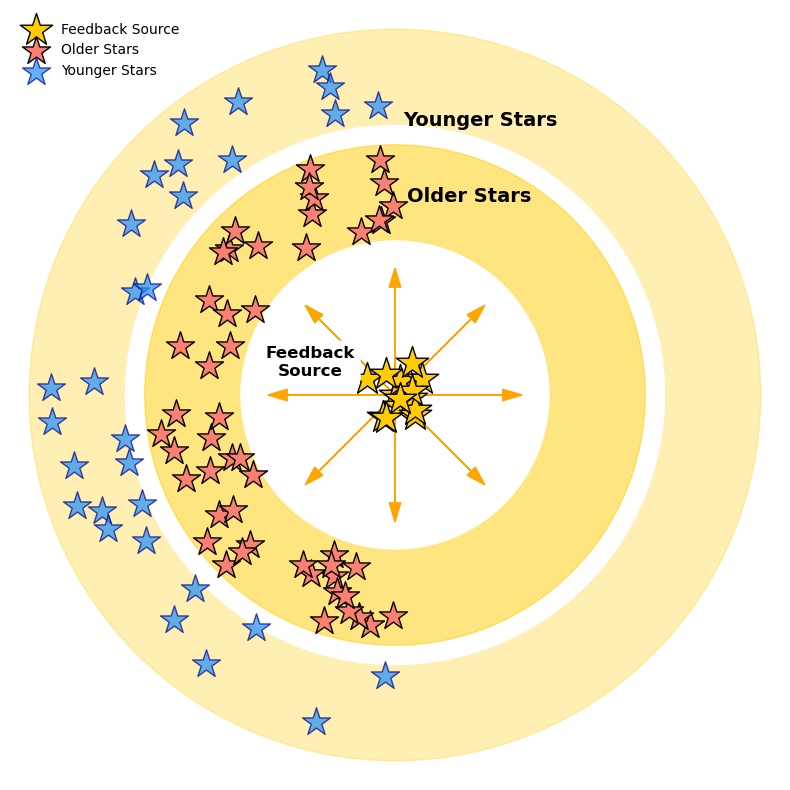
A recent study by researchers from the Xinjiang Astronomical Observatory (XAO) of the Chinese Academy of Sciences, in collaboration with the Shanghai Astronomical Observatory, Yunnan Observatories, and the University of Heidelberg, has identified four previously unknown primordial open cluster (OC) groups in the Milky Way.
The findings were published in Astronomy & Astrophysics.
Open clusters, loose assemblies of stars born from the same giant molecular cloud (GMC), are typically considered to form in isolation. However, the newly discovered OC groups consist of multiple member clusters originating from the same GMC, formed through sequential star formation processes. Notably, two of these groups, labeled G1 and G2, appear to have formed via a hierarchical mechanism triggered by multiple supernova (SN) explosions.
Using high-precision data from the Gaia satellite, the researchers identified the OC groups by analyzing correlations in three-dimensional (3D) positions, velocities, and ages. G1 and G2 display distinct ring-like and arc-like morphologies, suggesting external compression events.
Based on these findings, the researchers adopted a triggered star formation framework to construct spatial correlation maps between cluster age and distance from potential SN explosion sites around the birthplace of OC groups. A clear age-distance correlation emerged, supporting a scenario in which multiple SN explosions, occurring over a short timespan, sequentially triggered the formation of G1 and G2.
To further validate this hypothesis, they performed trajectory traceback analyses of 607 pulsars, which are remnants of SN explosions. Several candidates were found to have birthplaces matching the predicted explosion region. This spatial agreement, together with the observed cluster age gradients and SN remnant locations, supports a feedback-driven and hierarchical formation of OC groups.
This study highlights the pivotal role of feedback processes such as SN explosions in regulating large-scale star formation and the dynamical evolution of star clusters in galactic environments. Moreover, it also provides new insights into tracing feedback imprints in the Galactic structure and establishes a framework for connecting star formation, stellar evolution, and feedback processes across different scales.

Four newly reported primordial open cluster groups (G1–G4). The blue, green, red, and orange dots represent OC groups G1, G2, G3, and G4, respectively. The black arrows denote the tangential velocity of the member OC, with arrow lengths scaled proportionally according to the red reference arrow located in the upper right corner. (Image by XAO)

Schematic illustration of a supernova-triggered star formation scenario. A sequential star formation event was subsequently triggered along the shell, where red stars represent an older stellar population and blue stars indicate younger generations formed later. (Image by XAO)

86-10-68597521 (day)
86-10-68597289 (night)

52 Sanlihe Rd., Xicheng District,
Beijing, China (100864)

